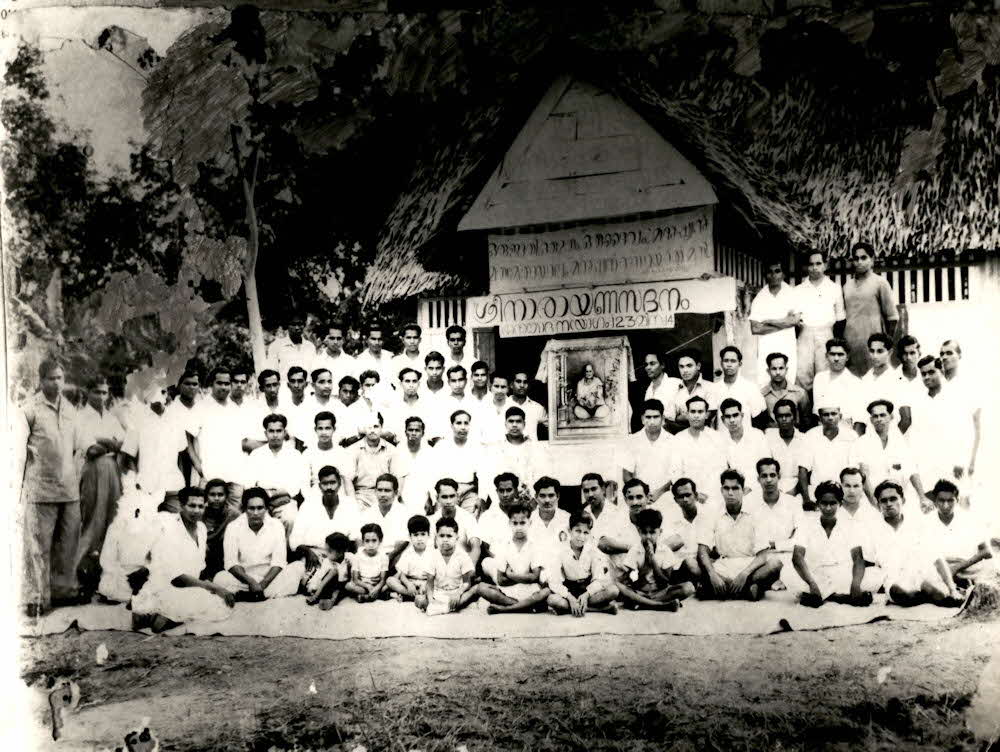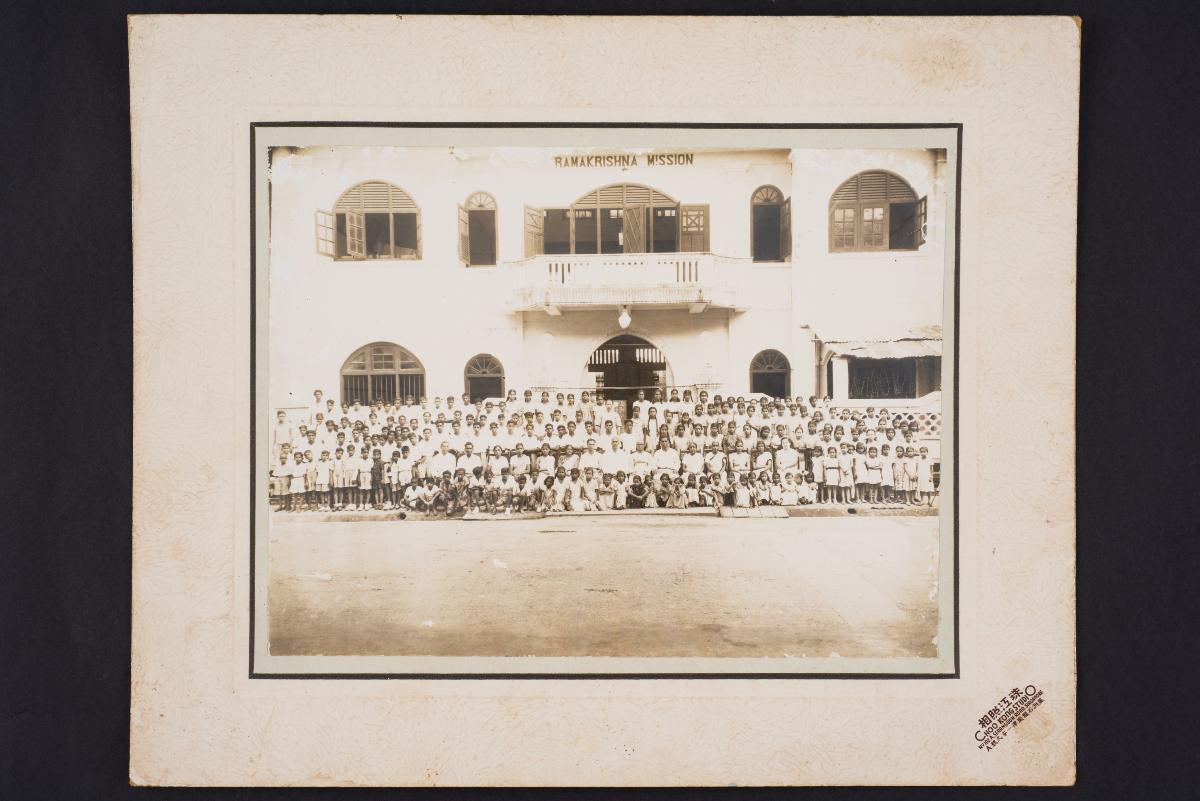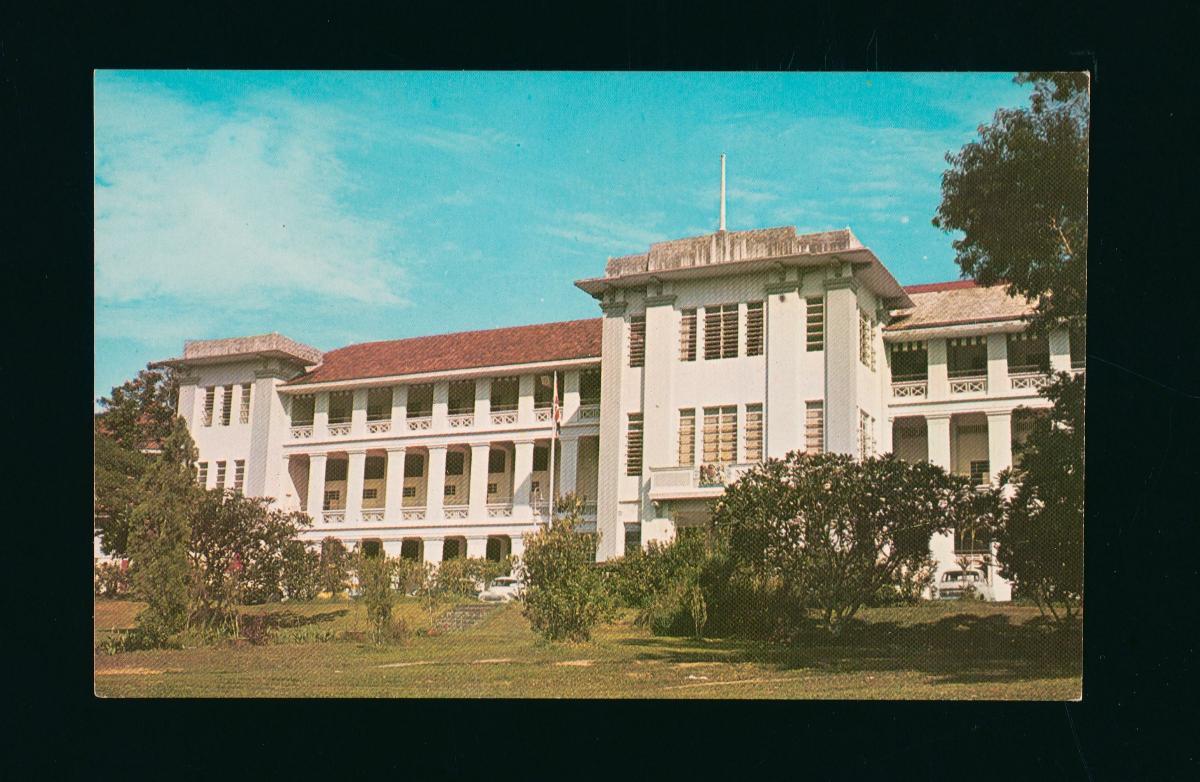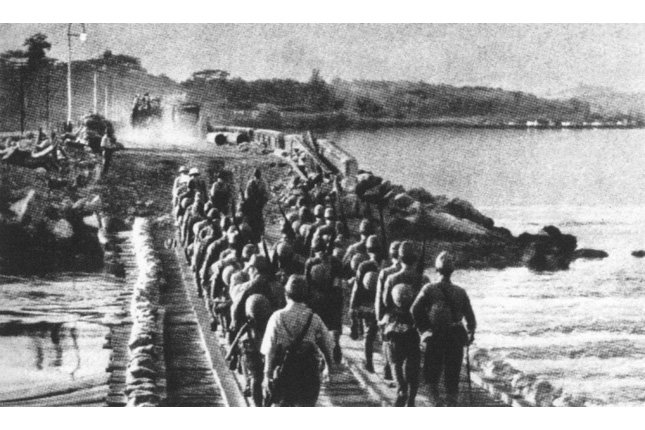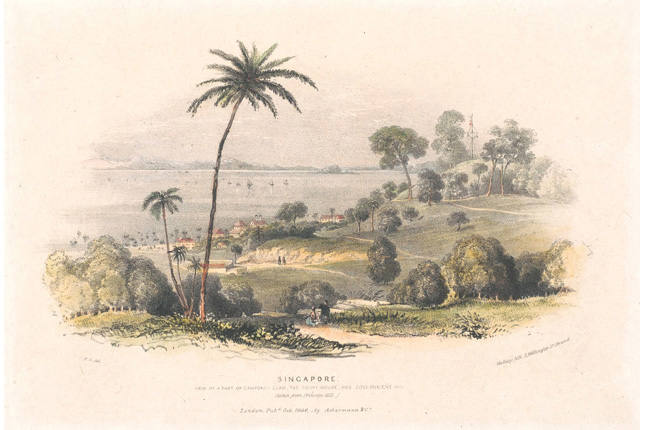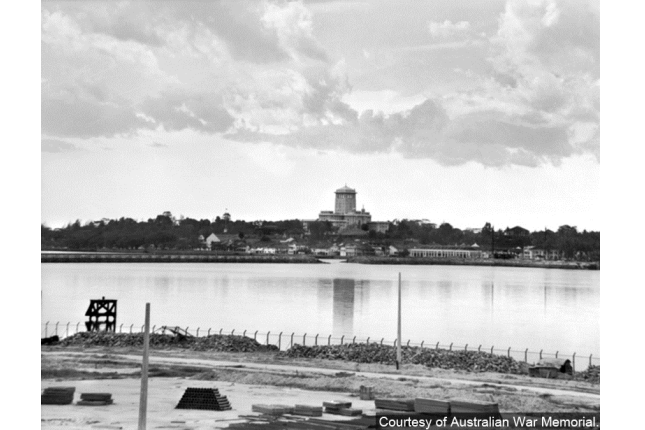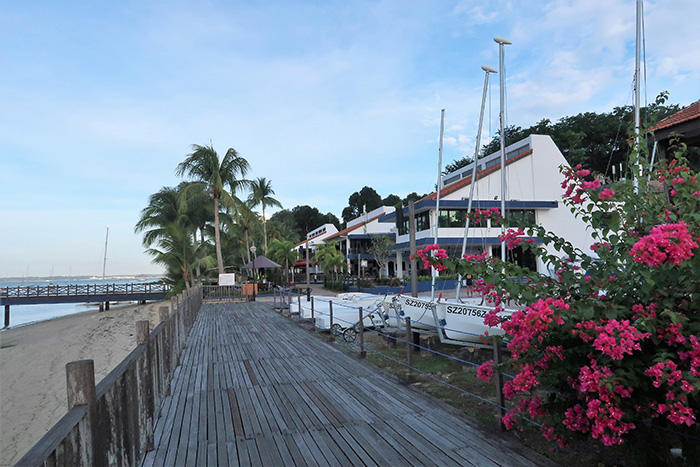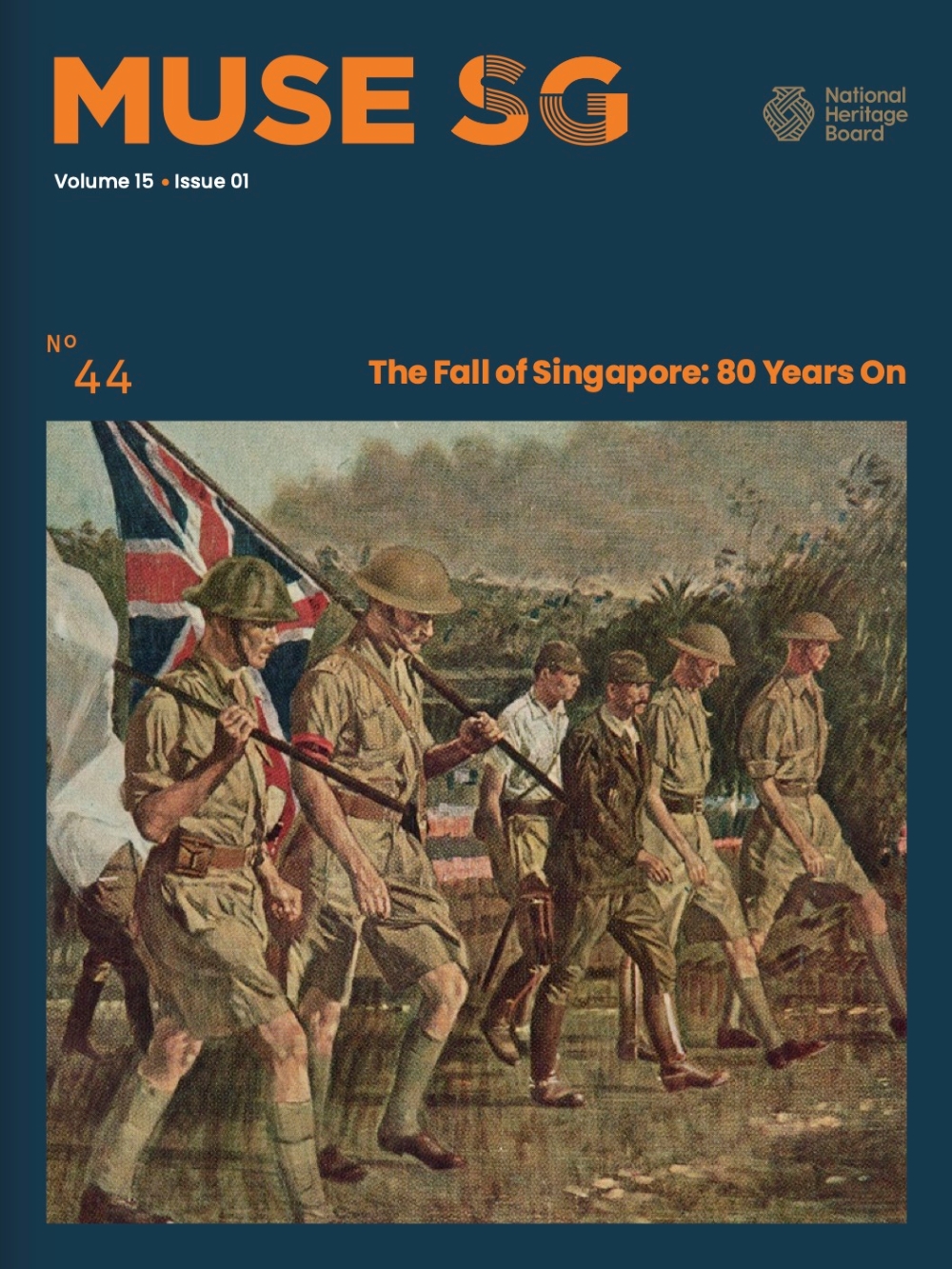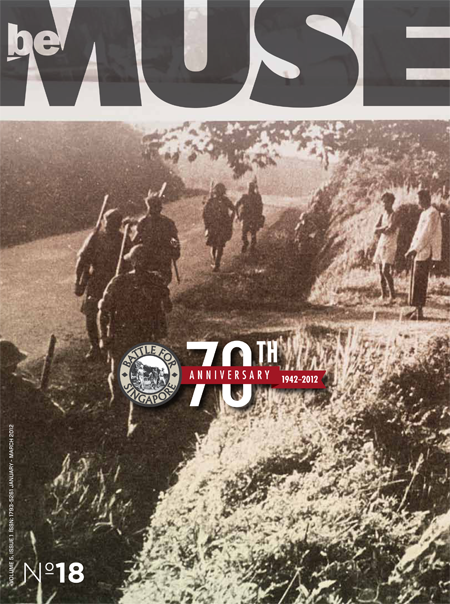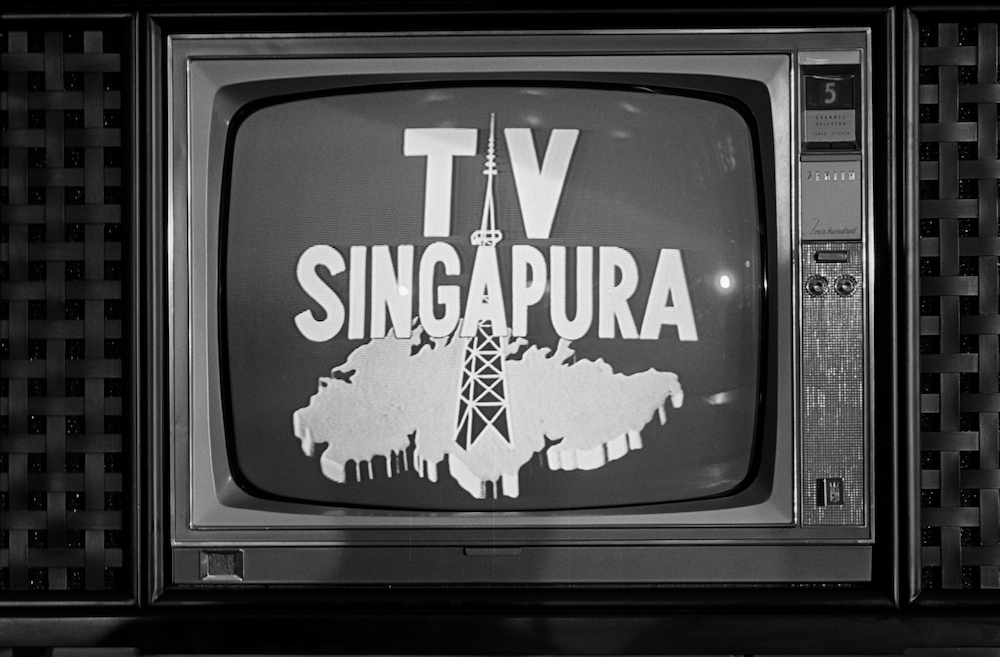TL;DR
The history of the Sree Narayana Mission in Singapore is inextricably linked to the departure of the British and the emergence of Singapore as an independent nation. In the process, the organisation has transformed itself from a charitable Malayalee foundation devoted to the teachings of its founding Guru into an institution of public character, supporting the new government’s welfare objectives by serving all Singaporeans with care and compassion.
The British military withdrawal is a major and well-known event in Singapore history. When British Prime Minister Harold Wilson decided to close down the bases ahead of schedule in 1968, it created major security and economic headaches. Singapore had just separated from Malaysia to become a republic in 1965. It was a tiny nation with no natural resources. Its security still rested largely on the presence of the 50-odd British military facilities all over the island. Chief of these was the massive Naval Base in Sembawang.
Economically, one-fifth of Singapore’s GDP came from the bases. In Chong Pang Village located outside the gates of the Naval Base, shops, restaurants and bars depended on the patronage of British servicemen, as well as barbers, bus and taxi drivers. The bases employed over 25,000 Singaporeans, both enlisted and civilian staff. There were also 8,000 or so amah working in the households of British officers.
Singapore not only survived the British rundown but emerged stronger as a nation by the mid-1970s. Conscription through National Service ensured that the nation had its own defence forces. Mass unemployment was averted as the government increased public spending and retrained clerks for technical work.
Most crucially, the land occupied by the bases amounted to ten percent of Singapore’s total land area. It was valuable real estate. All of it was used productively – for defence, economic, educational, and other public purposes. The dockyard inside the Naval Base was converted into a successful commercial shipyard called Sembawang Shipyard. Blocks of flatted factories sprang up in the largest of the bases – the Pasir Panjang army complex. The British pull-out became a catalyst for Singapore’s robust economic development.[2]
A Crisis Looms
In the drama of the times, there was a small organisation with a little-known history in Singapore which was also impacted by the British pull-out. This was the Sree Narayana Mission (SNM), located at now-defunct 48 Soon Keat Road in Chong Pang Village. Formed in 1948, the Mission was dedicated to the study of the teachings of Sree Narayana Guru (1856-1928), a prominent Indian sage and social reformer from Kerala, India.
SNM members at the hut in Sembawang that initially served as the Mission’s premises. The words in Malayalam (from top) read, ‘One in kind, one in faith, one in God is man’ and ‘Whichever the religion, it suffices, if it makes a better man’, Sree Narayana Appreciation Meeting, 123, 14th day of Meenam [Year 1123 of the Malayalam era, or 27 March 1948]. Photograph courtesy of Sree Narayana Mission.
The Guru had opposed the caste system in India and advocated the equality of all. Two of his guiding spiritual principles were ‘One in kind, one in faith, one in God is man’ and ‘Whichever the religion, it suffices, if it makes a better man’.[3] The Guru also urged his followers to carry out good deeds and help the poor: ‘Acts that one performs for one’s good, should also aim the good of other men’.[4]
These universal, straightforward teachings were easily adaptable in Singapore. The Mission provided scholarships and study loans to students from the major ethnic groups, as well as financial help and food rations to the destitute and needy in Sembawang. When handing out the SNM scholarships in 1965, Prime Minister Lee Kuan Yew was impressed by the multi-racial nature of the support: of the recipients, six were Indians, three Chinese and three Malays.[5]
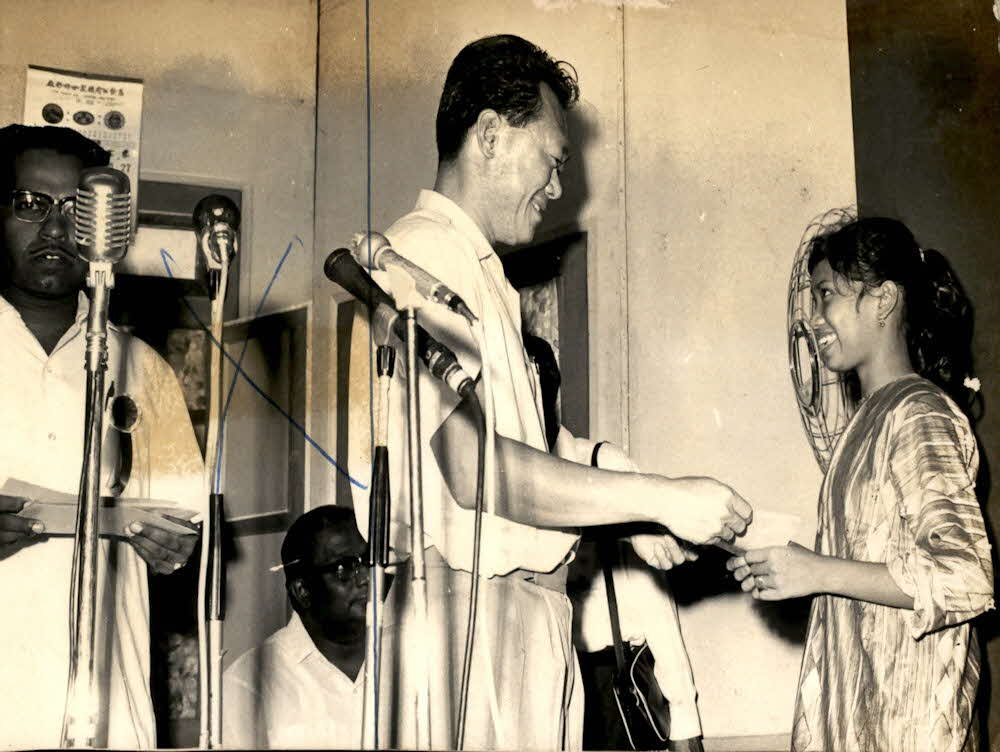
The membership of SNM was virtually entirely comprised of Malayalees who traced their lineage to Kerala. The Malayalees are a minority group of Indians in Singapore, being the second largest Indian subethnic group after the Tamils. Many of them came here to work in the British bases from the 1930s. It was not an accident that the Mission was located just outside the Naval Base. Many of its members were employed there as clerical or technical staff, at Seletar Airbase further south or at auxiliary facilities around these two bases. Others lived in the city and elsewhere in Singapore. Up till the mid-1960s, Malayalam was the official language of SNM, though English and other languages were also used for practical reasons.[6]
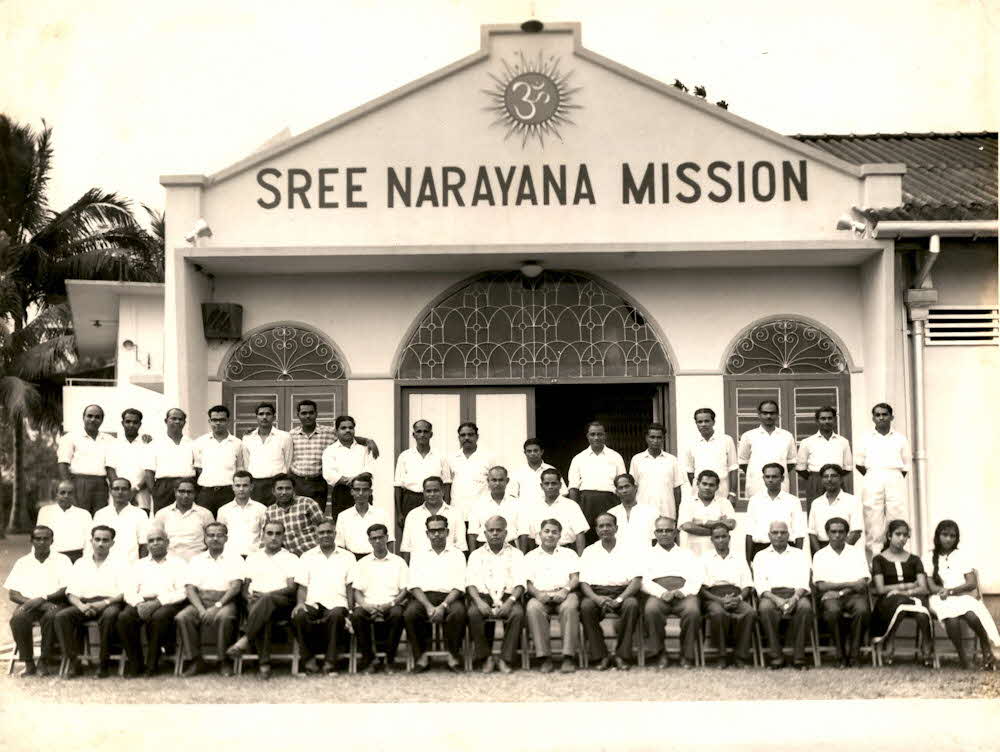
The British withdrawal thus struck SNM like a hammer. Eighty percent of its members were Naval Base employees but not citizens of Singapore.[7] Many of those born in India went back to their home villages, never to return. Others who were British subjects resettled in Great Britain. The British pull-out dispersed Malayalee families in three locations around the world – Singapore, India and Britain.
The membership of SNM plummeted and a crisis loomed for the Mission, as it did for Singapore. Prior to the rundown, the organisation had over a thousand members.[8] In 1969, SNM President M.K. Bhasi met with Singapore Council of Social Service (SCSS) officials to discuss its welfare programme. The Council was the umbrella body for all organisations in Singapore that provided social services. The Mission was one of its affiliates. Bhasi wanted to ask for donations to SNM to be tax exempt. But the main topic of discussion was how, as he admitted, ‘Ordinary membership has dropped sharply for the last two or three years’.[9]
One of those who migrated from Singapore was K.S. Kumar, who had been the President of SNM in 1960. He returned to India though his sons remained in Singapore, but eventually returned to the republic in the 1980s where he passed away.[10] In 1969, N. Raveendran Nair, the Assistant Secretary and also an active member, resigned from the executive committee and left for Britain.[11] Two years later, another committee member P. Gangadharan returned to India, as did K. Sahadevan, who was missed as ‘a strong supporter and a mainstay of the Mission’.[12] The annual celebrations of the Guru’s birthday that year had to be cut back due to reduced support from the remaining members; some of them might have been retrenched from the bases.[13]
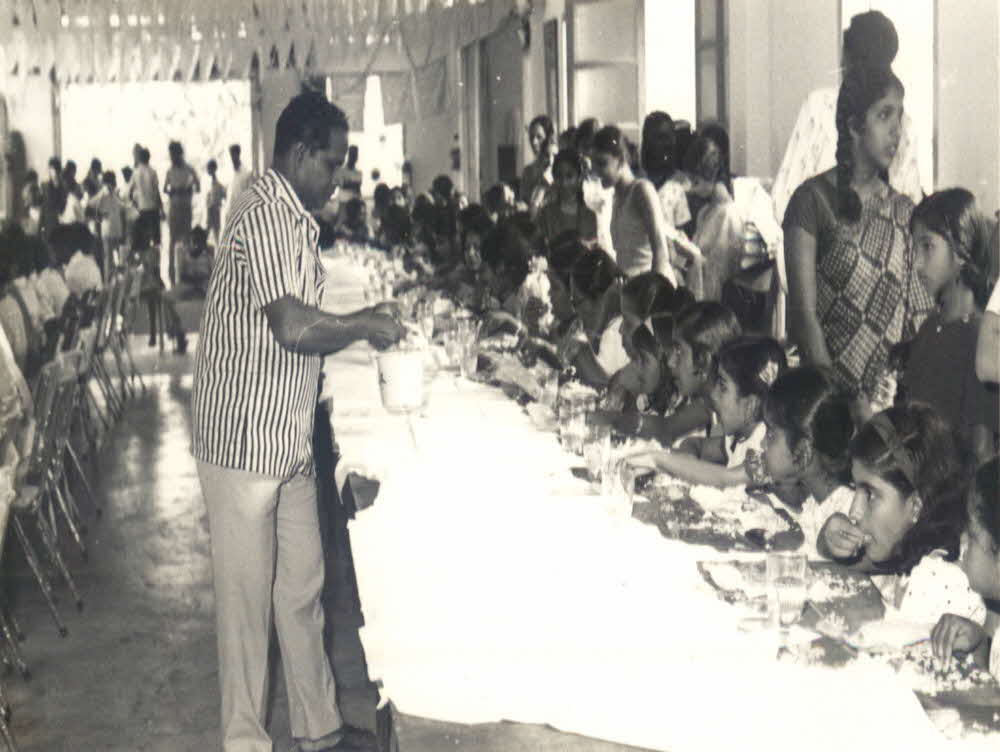
A Recruitment Drive
SNM met the challenge with a recruitment drive in Sembawang. It sought younger Malayalee members and even members from other ethnic groups. By 1969, the membership numbered only 200, though the majority were now Singapore citizens.[14] In 1971, the Mission still faced an ‘urgent need’ to find new blood. The President V. Jayaram formed a subcommittee for this purpose, comprising himself and committee members V. Sukumaran and V.K. Narayanan.[15] Only 14 new members joined that year, leading to some pessimism that ‘This figure does not augur well for the future of the Mission’. But the committee avowed to renew its efforts.[16]
Indeed, it was during the crisis that SNM found new members who were younger and locally-born. Bhasi, the President during most years of the British withdrawal (1967-1970, 1972-1976), was a school teacher. He brought several English-educated newcomers into the executive committee.[17] Among them was V. Srinivasan (the Assistant Secretary and also a teacher), who became an expert in SNM’s Flag Day fundraising. Srinivasan in turn roped in his friends and fellow teachers, G.P. Sasidharan (who became the Honorary Secretary) and D. Sambasivan (Honorary Treasurer).[18] Another new member was R. Asokan, who joined SNM in 1972 while he was still in National Service. Six years on, he joined the executive committee where he remained till 2002.[19]
The accelerated British pull-out created an emergency, but also helped transform SNM as an organisation. It was plausibly from this time that the younger leadership and much of the membership began to use English more frequently. The new members were also more likely to have been born in Singapore or Malaya.
The Mission continued its charitable work during this challenging period. Its Flag Day collection in 1970 was $15,783.17, hailed as ‘an all time high’. The executive committee credited the volunteers with this achievement – the men, women and children of the Mission who had canvassed for donations in neighbourhoods all across Singapore.[20] In a departure from the past, numerous school students also participated in the Flag Day, thanks to Srinivasan’s success in approaching schools for volunteers. Previously, collections were done by SNM members only and thus fairly small, limited geographically to the areas where they lived. By enlisting the support of school principals, Srinivasan was able to scale up the event to the national level.[21]
The 1971 executive committee led by President Jayaram continued to award scholarships, study loans and welfare assistance to needy families and destitute persons. It also made contributions to the Children’s Society, the Spastic Children’s Association and other welfare organisations.[22]
One of the beneficiaries during this difficult period was Madam Janagy Vadival, an Indian amah employed in a hospital. When she fell ill, SNM gave her $200 for food, textbooks and clothing for her five children and $30 for their monthly transport. This allowed the children to resume their studies, while assisting her own recovery.[23]
By 1978, the Mission had recovered from the decline in membership. It had 153 life members and 152 ordinary members. The executive committee, led by new President R. Sreedharan, noted that ‘The increase in membership is proof of the fact that the Mission is becoming identified by the public as a viable and reputable charitable organisation’. The Mission’s numerous subcommittees had also performed well – proof that the members were active.[24]
The Mission Transformed
The British rundown also necessitated a shift to work more closely to support the new government’s welfare objectives. In 1967, the Mission had become an affiliate of the SCSS. This gave it access to government funding for its programmes and would ensure its long-term sustainability.[25]
The new leadership was also more inclined to support the government’s welfare policy. Though it had always been involved in charitable activities, the SNM would now carry out direct welfare services as the SCSS wanted. In 1974, the Mission started a counselling and referral service to help individuals and families in distress in the northern part of Singapore, referring them to government agencies that could help them.
Five years later, SNM launched its Home for the Aged Sick, an institution for elderly people suffering from chronic illnesses who had no one to care for them. At the time, the SCSS was looking for voluntary organisations to provide good standards of care for this vulnerable group of elderly. As an affiliate of the Council, the Mission could fulfil this role as it lay at the heart of the Guru’s teachings to serve the community.
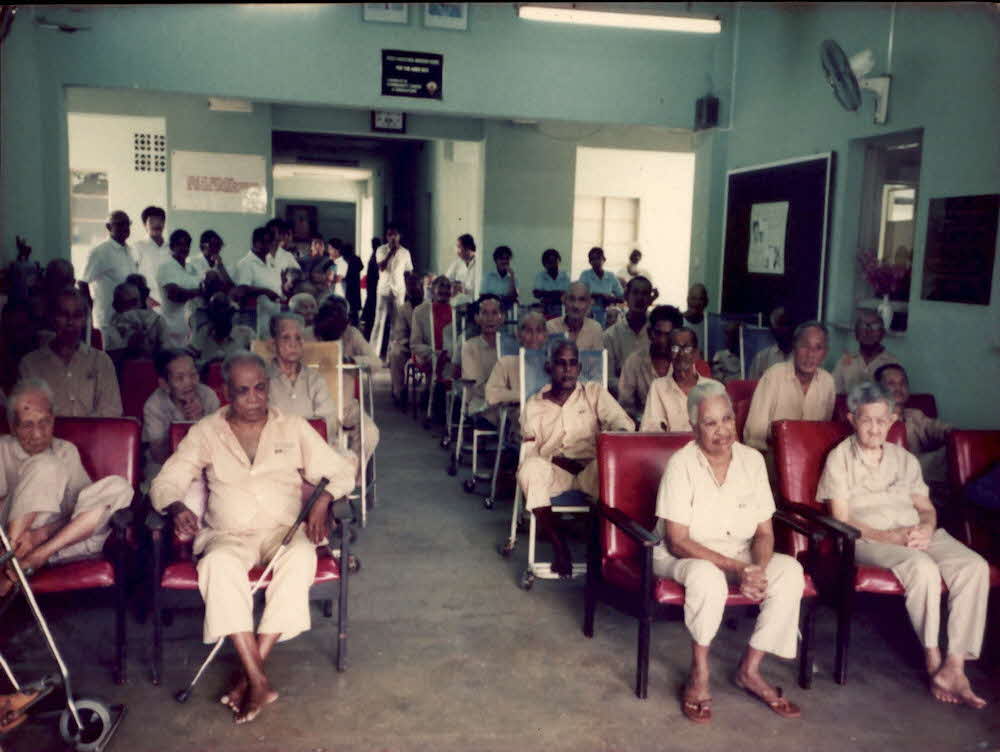
Residents of the SNM Home for the Aged Sick, c.1980s. Photograph courtesy of Sree Narayana Mission.
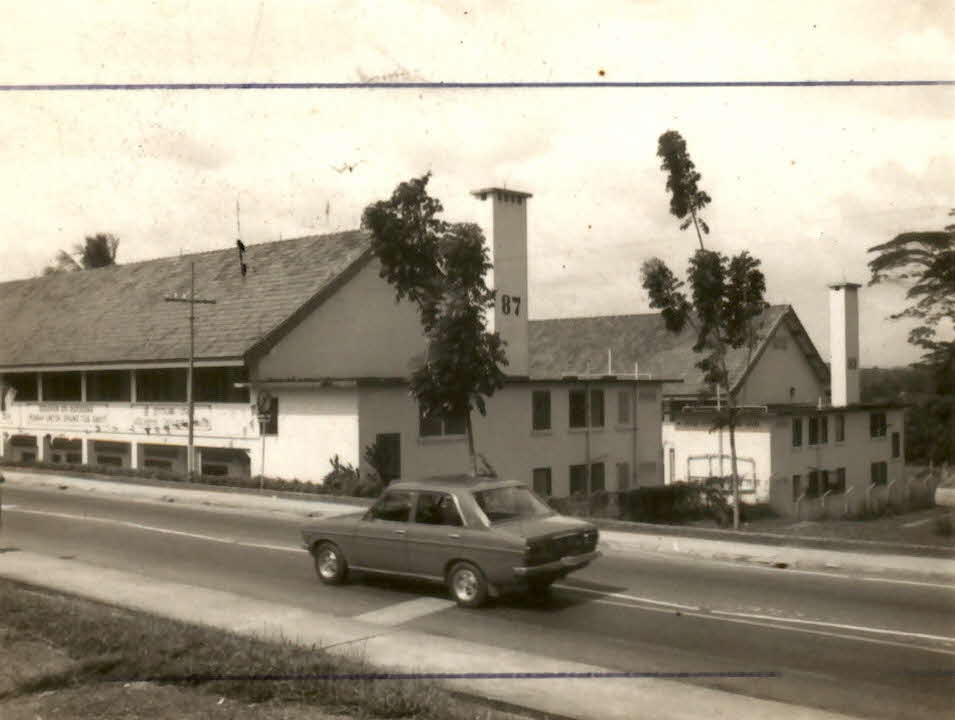
Blocks 87/89 Canberra Road – the former Naval Base Hospital Annexe and the premises of the SNM Home for the Aged Sick. Photograph courtesy of Sree Narayana Mission.
The Home’s residents were Singaporeans of different ethnic backgrounds; the majority were Chinese, as was Singapore’s general population. The institution was located at Blocks 87/89 Canberra Road – the former Naval Base Hospital Annexe in Sembawang, converted into a nursing home. Today, the nursing home and its senior care centre continues to fulfil the guru’s core teachings to serve with compassion - a fitting way to show how the British withdrawal acted as a catalyst for the transformation of the Sree Narayana Mission into a truly Singaporean institution, serving all regardless of race, language or religion.
Dr Loh Kah Seng is a historian and director of Chronicles Research and Education, a historical research consultancy. He is interested in all things that happened in the history of Singapore. His books include Squatters into Citizens: The 1961 Bukit Ho Swee Fire and the Making of Modern Singapore (2013); Theatres of Memory: Industrial Heritage of 20th Century Singapore (2021); and Pandemics in Singapore, 1819-2022: Lessons for the Age of COVID-19 (forthcoming).
This project was supported by the National Heritage Board's Heritage Research Grant.
Notes
- Supported by Heritage Research Grant of the National Heritage Board, Singapore. Any opinions, findings, and conclusions or recommendations expressed in this material are those of the author(s) and do not necessarily reflect the views of the National Heritage Board, Singapore.
- Loh Kah Seng, ‘The British Military Withdrawal from Singapore and the Anatomy of a Catalyst’, in Derek Heng and Syed Khairudin Aljunied (eds.), Singapore in Global History (Amsterdam: Amsterdam University Press, 2011), pp. 185-204.
- SCSS M/88/66 Vol. VI, Souvenir to Commemorate the 112th Birthday of Sree Narayana Guru, 31 August 1966, p. 13.
- SCSS M/88/66 Vol. VI, Souvenir to Commemorate the 112th Birthday of Sree Narayana Guru, 31 August 1966, p. 13.
- National Archives of Singapore (thereafter NAS), Transcript of a Speech Made by the Prime Minister Mr Lee Kuan Yew at the Sree Narayana Mission, 12 September 1965; SCSS M/88/66 Vol. VI, Souvenir to Commemorate the 112th Birthday of Sree Narayana Guru, 31 August 1966.
- SCSS M/88/66 Vol. VI, Sree Narayana Mission, Singapore, Rules and Regulations, 18 October 1966.
- SCSS M/88/66 Vol. VI, Meeting between SCSS and Bhasi, 5 March 1969, p. 1
- NAS, interview with M.K. Bhasi, 14 October 2017, Reel 5.
- SCSS M/88/66 Vol. VI, Meeting between SCSS and Bhasi, 5 March 1969, p. 1.
- Loh Kah Seng, interview with Dilip Kumar, 14 June 2022.
- SCSS M/88/66 Vol. VI, Annual Report of Management Committee, 1969; SCSS M/88/66 Vol. VI, Annual Report of Management Committee, 1971.
- SCSS M/88/66 Vol. VI, Annual Report of Management Committee, 1971, p. 3.
- SCSS M/88/66 Vol. VI, Annual Report of Management Committee, 1971.
- SCSS M/88/66 Vol. VI, Meeting between SCSS and Bhasi, 5 March 1969.
- SCSS M/88/66 Vol. VI, Minutes of the Joint Committee Meeting, 31 January 1971.
- SCSS M/88/66 Vol. VI, Annual Report of Management Committee, 1971, p. 3.
- Loh Kah Seng, interview with M.K. Bhasi, 20 April 2022.
- Loh Kah Seng, interview with V. Srinivasan, G.P. Sasidharan and D. Sambasivam, 16 March 2021.
- Loh Kah Seng, interview with R. Asokan, 16 February 2022.
- SCSS M/88/66 Vol. VI, Annual Report of Management Committee, 1970.
- Loh Kah Seng, interview with V. Srinivasan, G.P. Sasidharan and D. Sambasivam, 16 March 2021.
- SCSS M/88/66 Vol. VI, Social Welfare Programme for 1971, 31 January 1971.
- SCSS M/88/66 Vol. VI, Letter from Y.S. Fung to K. Bhasi, 27 January 1968.
- SNM, Report of the Management Committee, 1978, p. 2.
- John Solomon, interview with M. Velayudhan, 16 March 2022.




